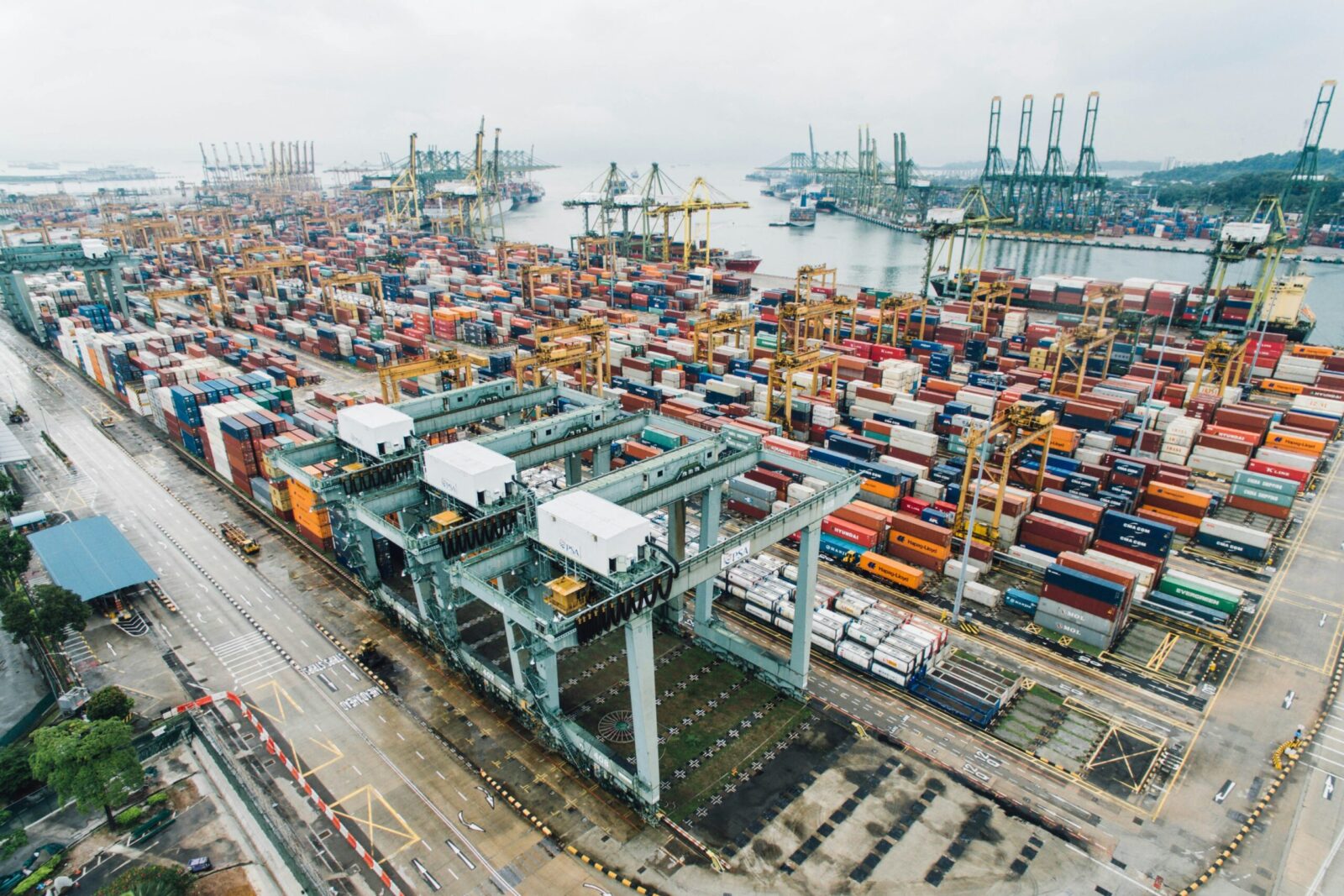
Lean Logistics: 5 Proven Methods to Manage It Efficiently
Lean logistics applies lean management to supply chain performance. Lean Logistics eliminates non-value-added procedures to improve commodity flow and cut...

Get 20€ off on your first order!
Rapid technical breakthroughs and changing market conditions are shaping supply chain management. Businesses must adapt to these changes to be competitive, resilient, and efficient.
Trends like AI, automation, sustainability, and cloud solutions are changing supply chains. This article discusses the top 10 supply chain management trends for 2023 and beyond and how firms may use them to improve operations and compete in a fast-changing global market.
People love AI more than ever. Our 2023 State of Manufacturing Report found that 85% of organisations have used AI technologies and 45% expect supply chain management benefits.
View our manufacturing status report.
AI and automation can boost supply chain speed and niche competitiveness. Whether or whether you employ AI, you should streamline your supply chain since your rivals do. Our survey reveals 97% anticipate AI to affect product development and production.
Your organisation may use AI and automation to improve your production line, power digital twin technologies, and more. Consider AI for supply chain management.
Supply chain visibility was the top company goal for 55% of our 2023 State of Manufacturing Report respondents.
Automate your supply chain by outsourcing part purchase to Fictiv, a digital manufacturing business. Our AI platform provides free, immediate design for manufacturability (DFM) feedback and manufacturing partner finding (so you don’t have to email vendors).
Economic insecurity, inflation, and geopolitical upheaval hinder new product introduction (NPI). According to our recent State of Manufacturing Report, 94% confront NPI hurdles and 49% want to speed up NPI.
This desire for quicker NPI requires organisations to switch to more durable and effective supply chains to sustain rapid prototyping and innovation.
Partnering with an AI-powered supplier guarantees a strong supply chain, rapid prototyping, and speedier time to market.
Early communication between procurement and supply chain management teams can also help detect material selection and supply chain concerns.
Businesses must split their supply chain and develop segment-specific strategies to compete in 2023 and beyond.
CNC machining and injection moulding may be customised to develop prototypes and expedite production without losing quality or precision.
Automate your order processing system by segregating regular and customised orders to ease handling personalised customer orders.
Fictiv offers easy bespoke production. We handle the complete supply chain and provide rapid, accurate custom-manufactured components when you need them!
Internet of Things (IoT) is a network of digitally connected, wirelessly accessible physical items. IoT devices will number over 25.4 billion by 2030, according to Dataprot.
IoT may expand operations and transportation supervision and improve:
The IoT is invaluable and will continue. McKinsey Digital reports 127 new internet connections each second. Our 2023 State of Manufacturing Report found that 54% of respondents utilise IIoT digital manufacturing technologies and 33% are installing them.
Combining IoT devices with other tech boosts their benefits. The data from warehouse sensors might assist you automate forecasts and asset tracking.
Want to know how IoT, digitisation, and AI affect manufacturing today? The 2023 State of Manufacturing Report is available here.
Businesses may boost profits by building digital manufacturing ecosystems. Electronic Supply Chain Management (e-SCM) is especially affected by this development.
Recent research found that 60% of respondents utilise and 31% are deploying digital supply chain analytics and visualisation solutions.
Digitising your supply chain has many advantages:
Decrease supply chain disruptions. This article explains how digital manufacturing decreases supply chain interruptions.
Automate workflows to boost productivity.
Real-time inventory tracking reduces the danger of overstocking and frees up cash.
A recent research found that 71% of corporations want to enhance U.S. production and over half want to expand North American suppliers.
These firms prefer long-term suppliers. Building excellent connections with team members, vendors, and suppliers may improve supply chain collaboration.
Pro tip: Find a digital manufacturing partner that values individuals and their unique problem-solving skills. This method enables rigorous inspection, fast production of high-quality components, and infinite customisation choices.
Find mutually advantageous approaches to assist your and your supplier’s aims. Share information, fix problems before they cause extra effort, and handle unanticipated complications.
You must minimise risk to keep your supply chain steady during unpredictable times.
Consider acquiring raw resources from a more stable region if they come from a politically problematic location. If something happens, you can shift fast and minimise disturbance. Companies’ top supply chain risk reduction strategies for 2023:
Technology investments to improve supply chain efficiency
Assessing supplier connections for improvement
Leaders have prioritised supply chain visibility (55% per our current State of Manufacturing Report) for two years.
However:
Smaller organisations prioritise customer happiness and operational efficiency.
Compared to 2022, medium-sized enterprises now prioritise supply chain resilience and agility.
A year later, larger organisations still prioritise supply chain visibility.
Supply chain visibility is often achieved via supply chain management technologies, which includes IoT, 5G, Starlink networks, AI, machine learning, robots, and PLM software.
More supply chain visibility lets you:
Avoid order mistakes and delivery delays.
Address issues faster.
Improve your supply chain and organization’s efficiency, dependability, and robustness.
Pro tip: Read our Modern Supply Chain Management booklet!
See also 30+ Supply Chain Statistics You Should Know!
There is rising support for the circular supply chain method, which recycles raw materials and waste goods for manufacture.
circular supply chain model showing shared operations
Circular supply chain model showing shared operations
The circular supply chain approach boosts sustainability and profits for your company. You’ll save more on storage, shipping, and administration.
You may also monitor your materials and goods in real time with the correct technology.
Your company (78% of respondents) is considering technology to improve organisational efficiency for new product development.
SaaS models help supply chain management. SaaS is efficient, secure, and trustworthy. In a global, digital supply chain, SaaS solutions must be efficient.
The supply chain landscape is undergoing a profound transformation, with emerging technologies and strategies offering new opportunities for growth and efficiency. By embracing trends such as AI, IoT, cloud solutions, and the circular supply chain model, businesses can future-proof their supply chains, enhance visibility, and reduce risks.
Being ahead of these trends will enhance operational performance and equip organisations to meet changing client needs and traverse a complicated global market with agility and resilience.
Thank you! You've signed up for our newsletter.



















Lean logistics applies lean management to supply chain performance. Lean Logistics eliminates non-value-added procedures to improve commodity flow and cut...

Introduction Today’s complex and turbulent business environment requires effective supply chain risk management. As global supply networks become more intertwined,...

Introduction Success in today’s fast-paced corporate climate requires efficient supply chain management. Lean supply chain management has become a valuable...

Lean logistics applies lean management to supply chain performance. Lean Logistics eliminates non-value-added procedures to improve commodity flow and cut...

Introduction Today’s complex and turbulent business environment requires effective supply chain risk management. As global supply networks become more intertwined,...

Introduction Success in today’s fast-paced corporate climate requires efficient supply chain management. Lean supply chain management has become a valuable...
Get 20€ off on your first order!
Save 30% by buying directly from brands, and get an extra 10€ off orders over €100
Save 30% by buying directly form brands, and get an extra 10€ off orders over €100